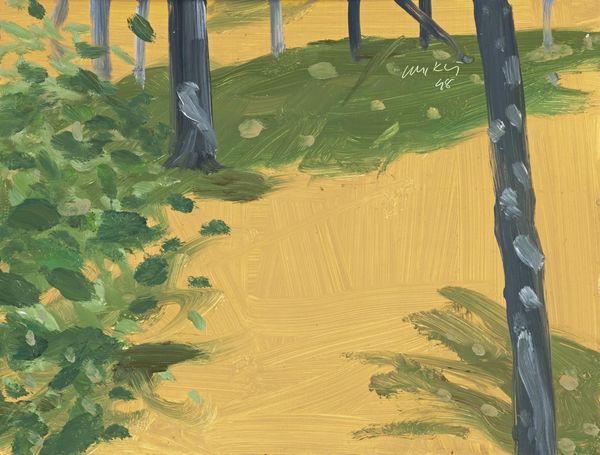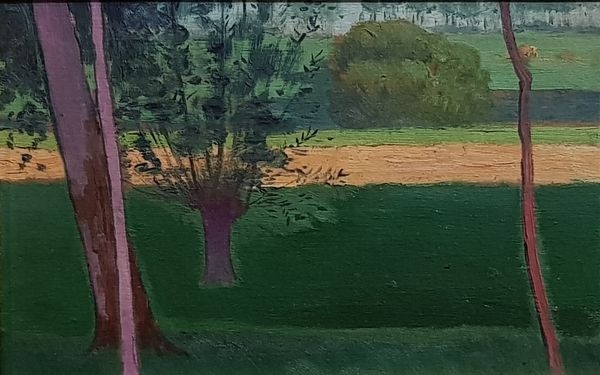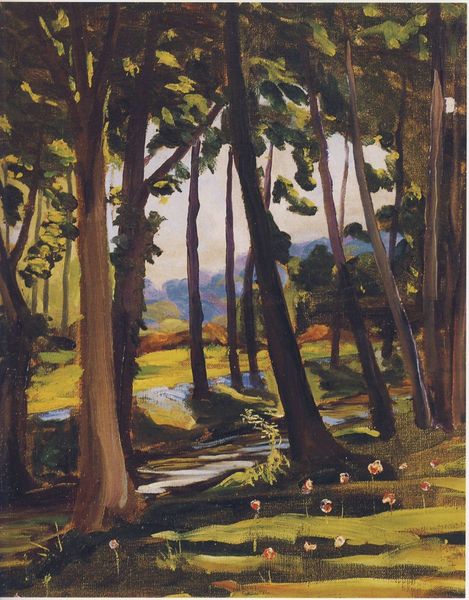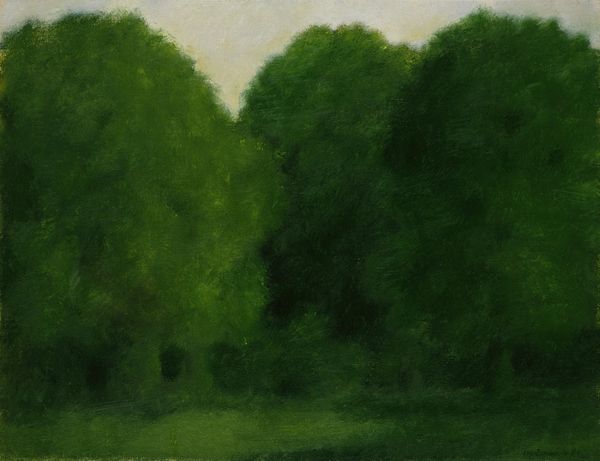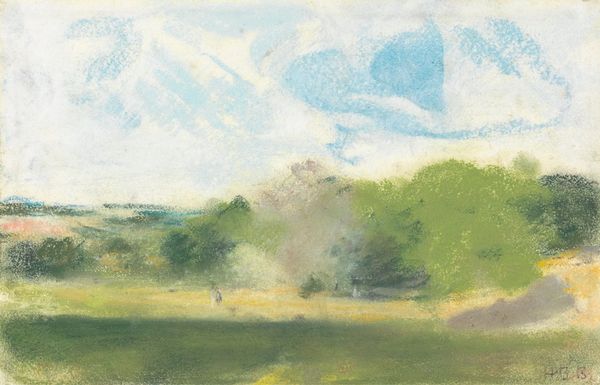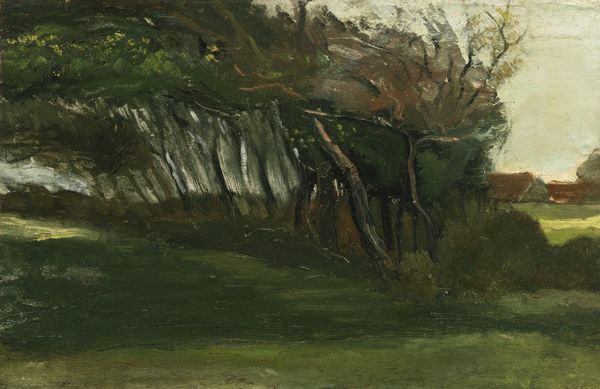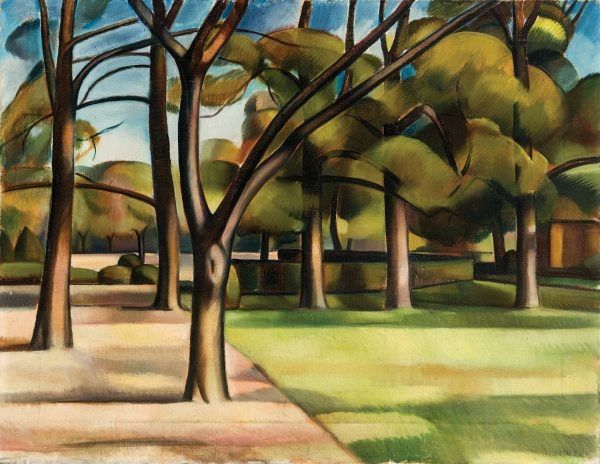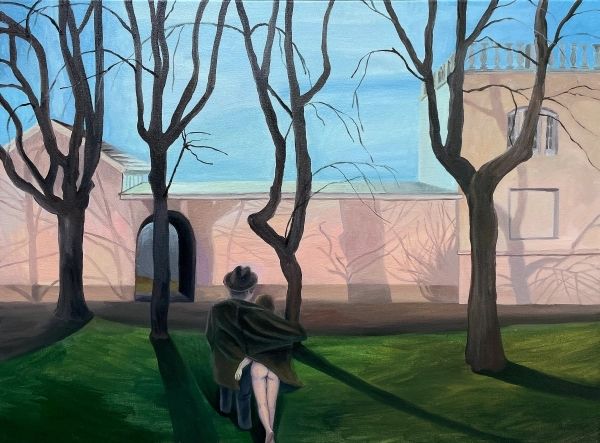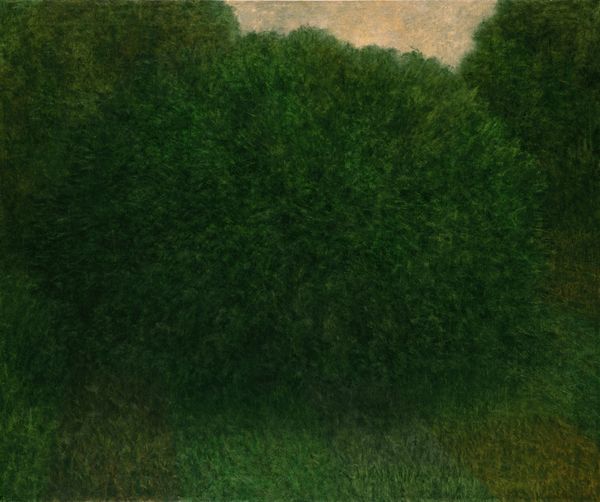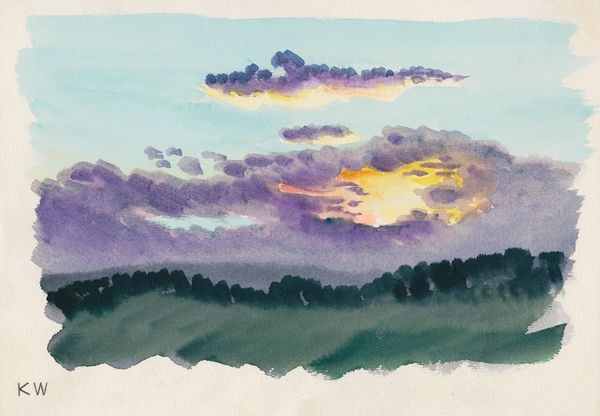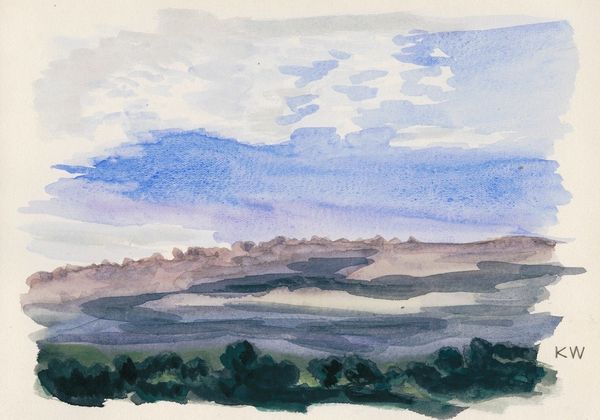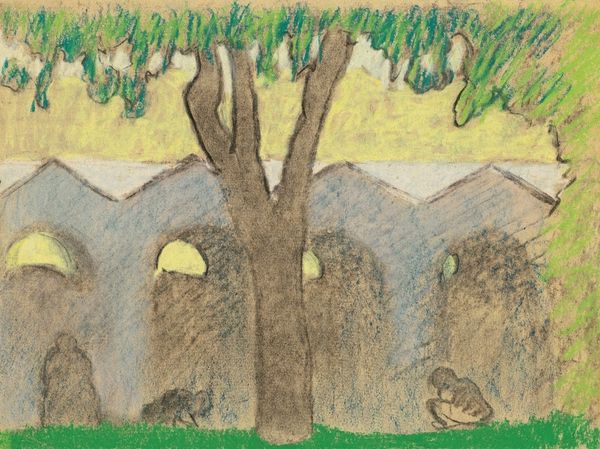
plein-air, oil-paint
#
plein-air
#
oil-paint
#
landscape
#
hudson-river-school
#
cityscape
#
realism
Copyright: Public domain
Editor: Looking at George Ault's "Summer Landscape," an oil painting done in plein-air style, I'm immediately struck by its quiet stillness. The rolling green field and wispy clouds seem almost… manufactured. What do you see in this piece? Curator: It’s interesting that you picked up on a feeling of something “manufactured.” Consider the materials used here: oil paint, canvas, pigments meticulously processed. Landscape painting, particularly plein-air, became incredibly popular during a time of intense industrialization and urbanization. How might the *act* of producing this image – extracting pigments, weaving the canvas – offer a counterpoint, or perhaps a romanticized view of the changing relationship to the land? Editor: So, instead of just seeing a pretty landscape, we should think about the labor involved in creating the image itself, and the historical moment driving that desire for rural scenes? Curator: Precisely! The Hudson River School painters, like Ault, were directly engaging with ideas of land ownership, manifest destiny, and the very *material* transformation of the American landscape through resource extraction. The smooth, almost artificial quality you noticed, may actually be highlighting a tension. Was it a pristine landscape, or one already deeply shaped by human hands and the materials economy? Think about the sourcing of the pigments, their creation and how they became precious to artists… Editor: That makes me think differently about the role of the artist too – less a neutral observer and more someone actively participating in, and maybe even commenting on, those processes. Curator: Exactly! Consider where Ault sourced his materials; his relationship with suppliers, his peers, and patrons all impacted the materiality of this work. We're looking at more than just a representation. We are considering material reality. Editor: That’s fascinating. I hadn’t thought about it that way before, focusing on materials and labor makes the artwork more real! Curator: It really underscores the importance of examining not just what's *in* the painting, but *how* it was made and *why.* It gives art so much deeper context.
Comments
No comments
Be the first to comment and join the conversation on the ultimate creative platform.
